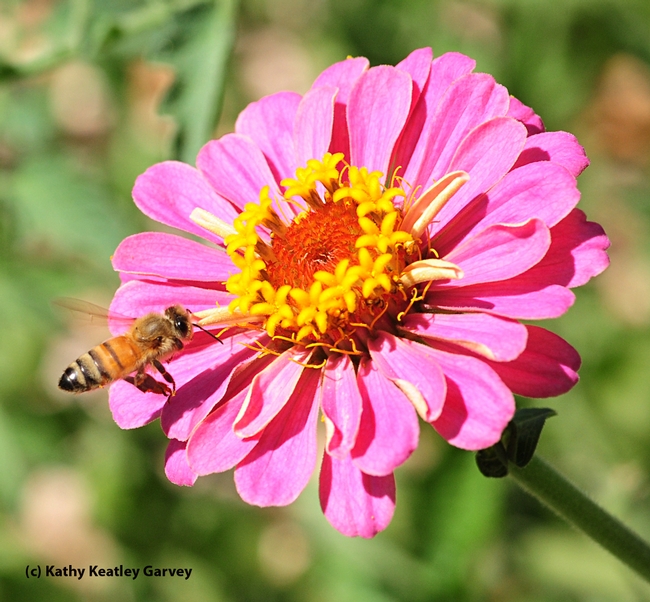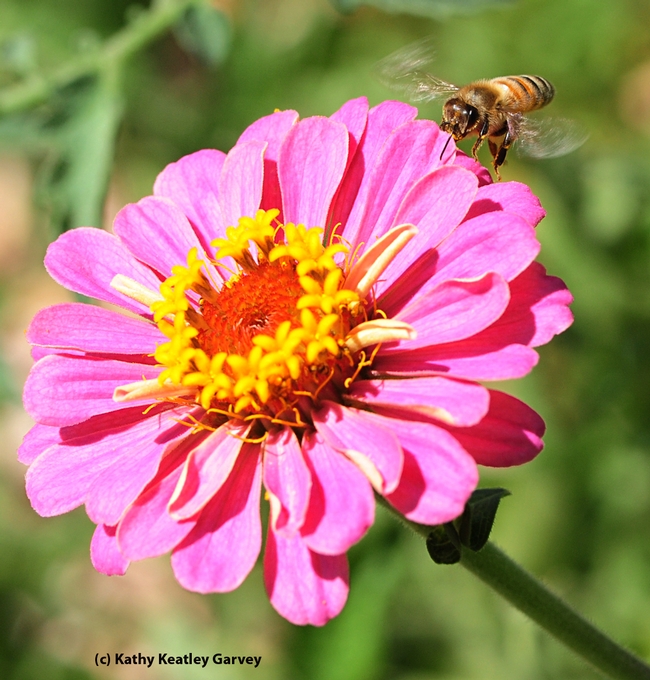Watching honey bees zero in on the zinnias: Zounds!
Zinnias, known throughout the world as showy and easy-to-grow flowers, are as colorful as they are attractive to bees.
Last week we watched a honey bee head toward a zinnia, grab some nectar, buzz around the blossom, and return again and again.
The site: the Häagen-Dazs Honey Bee Haven, which is quite attractive to people as well as to pollinators. The half-acre garden, open from dawn to dusk, is located on Bee Biology Road, next to the Harry H. Laidlaw Jr. Honey bee Research Facility, west of the central UC Davis campus. Admission is free for self-guided tours. Those interested in guided tours can contact Christine Casey at cacasey@ucdavis.edu for more information. Several interns are working in the garden this summer: Danielle Wishon, Nick McMurray and Eric Xu. Wishon just received her bachelor's degree in entomology from UC Davis, and both McMurray and Wu are undergrads at UC Davis: McMurray is studying entomology, and Xu, landscape architecture.
At the haven, you'll find plants from "A" to "Z"--from almonds to zinnias, and lots in between. It's a year-around food source for the Laidlaw bees and other pollinators and serves as an educational resource for visitors.
Want to know what's planted in the garden right now? Check out the plant list posted on the Laidlaw facility website.
Just a few of them: apples, basil, catmint, deergrass, eggplant, elderberry, fruity germander, Greek myrtle, hummingbird sage, lamb's ear, Mexican daisy, naked buckwheat, oregano, pomegranate, raspberry,Santa Barbara daisy, St. Catherine's lace, toyon, Western columbine, yarrow, and yes, zinnia!
Yes, the haven also has a Facebook presence!
Attached Images:



